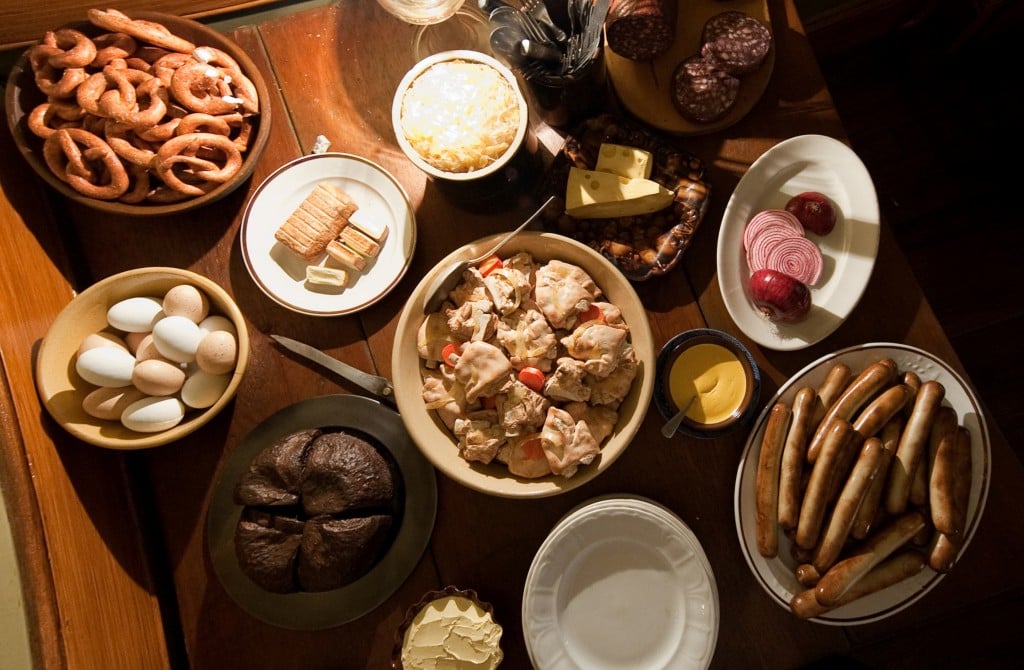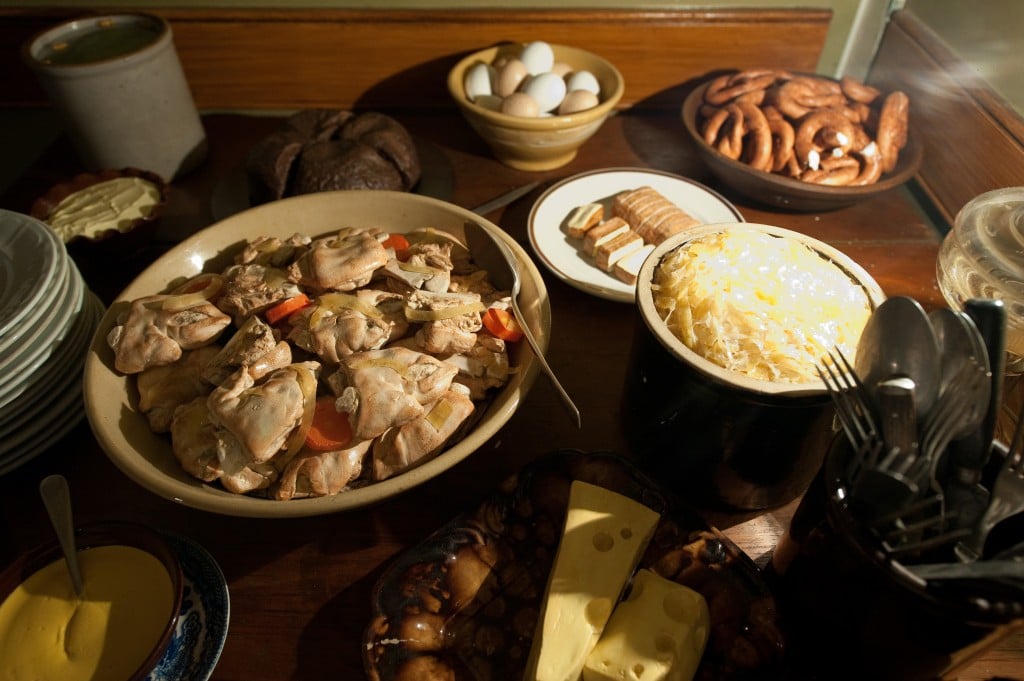Blog Archive
Passport to Lunch
New York City: The Melting Pot of America. But what exactly is in that pot? And how did it get there? More importantly, how does it taste?
Food is arguably the most widespread “language” spoken across the globe. The methods of preparation and ingredients that go into our favorite dishes vary as we travel from country to country. However, without a plethora of frequent flyer miles, it can get a little pricey to taste all these countries and cultures. Enter: New York City. For those of us fortunate enough to call ourselves residents of the Big Apple, we know that the options are endless, no matter what we are craving. Whether it is a Cuban sandwich, a tofu Banh Mi sandwich, or some crispy sour pickles, The Lower East Side’s got it. A person can country-hop the globe by strolling the neighborhood that millions of immigrants have called home for generations.
The Lower East Side Tenement Museum celebrates the courageous immigrants who left everything they knew to start a new life in the land of opportunity, but more specifically in New York City. The thousands of people who settled into 97 Orchard Street brought with them everything they could jam into their suitcases, but perhaps more importantly, their rich and culturally diverse knowledge of food. How to season it, prepare it, share it, and love it. Back when the Lower East Side was known as Kleindeutschland (or “Little Germany” due to its predominantly German population), popular dishes such as boiled sauerkraut and egg noodles made their American debut thanks to families like the Glockners, one of the many former residents of 97 Orchard Street.
As the demographics shifted and the neighborhood became more Jewish, residents of the Tenement may have stopped to enjoy the aromas of freshly baked challah bread engulfing the hallways of the third floor, home to the Rogarshevsky family. These traditional cuisines had been prepared in kitchens for centuries before they migrated to American dinner tables, and they continue to be enjoyed by those who hail from entirely different regions of the world. This is what the Lower East Side is all about.
As the neighborhood evolved, so did the menus. More and more immigrants from every hemisphere brought their own traditional styles, but found they were welcoming customers from other community groups. Immigrants like Vanessa Weng, a Chinese native, realized that Mandarin cuisine was not as highly represented as deserved in the Chinese food scene. To counter this, she opened her own dumpling house in 1999. The stars of this now Lower East Side landmark eatery are her dumplings in a wheat-based wrapper. Northern China’s soil is better equipped for growing wheat, which is a staple in Mandarin cooking. As a foodie, I can personally attest to the culinary revolution that is Vanessa’s Dumplings. Additionally, immigrants and locals can all appreciate Vanessa Weng for proving that deliciousness does not have to cost a paycheck.
The Tenement Museum knows the integral role that food has played in shaping New York City, especially the Lower East Side, and has whipped up various programs that allow our guests to indulge in all that our neighborhood has on its plate. From our “Foods of the Lower East Side” walking tour, to our “Tours and Hors D’oeuvres” and “Tastings at the Tenement” evening programs, we have expanded our appetite for cultural learning, and of course, eating. But we are still hungry. There are simply too many scrumptious delicacies to savor, right here at our finger tips. In addition to these tasty programs, The Lower East Side Tenement Museum now offers our exclusive event space for your own lunch programs. Whether it’s for weekly meetings, presentations, or team-building, you can now spice up your company or group’s lunch routine with the help of the Lower East Side’s famous cuisines.
Food is perhaps the main ingredient in any culture. The traditions and flavors that millions of immigrants have brought with them over the past few centuries has helped cultivate “The Big Apple” into the deliciously diverse city that so many of us are fortunate enough to call home.
– Post by Ryan Jensen

